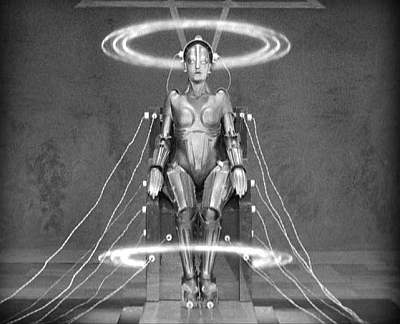“As an artist, I think delusion is the greatest gift that you can bear.” ~ Lady Gaga
You’re not supposed to take pop music seriously. By definition, it is fluff; pure sugar. But sugar, sweet and insubstantial as it is, can be a dangerous thing.
Music is a powerful force. And pop music holds great influence over the masses. It’s worth noticing, then, what kind of messages are being broadcast to our minds via the pop music industry.
As the slew of buzzing conspiracy sites can attest, there has been a distinct and disturbing trend in the music imagery of the past several years, which propagate the glamorization of mind control themes.
Whether it’s Lady Gaga portraying an insane asylums through a high fashion lens in “Marry the Night,” or Britney Spears posing as a laboratory marionette with tubes coming out of her bandaged fingers in “Hold it Against Me,” pop stars are all pumping out the same recycled slew of mind control themes.
Many people may not realize that the practice of trauma-based mind control has a chilling history in the US: in the 1950′s and 60′s the CIA conducted covert and illegal experiments on unwitting citizens, now declassified and known as project MK ULTRA.
If you’re not familiar with this subject, be prepared to discover a disturbing facet of American history. The image below is shocking–it’s the only photographic image I can find online from the MK Ultra files, most of which were destroyed–but I offer it under due consideration to substantiate the argument that conspiracy theories of trauma-based mind control are not so far fetched.
The published evidence indicates that Project MK ULTRA was a government-funded operation created with the goal of studying various methods of mind control, using the surreptitious administration of drugs and other chemicals, hypnosis, sensory deprivation, isolation, verbal and sexual abuse, as well as various forms of torture.
Project MK ULTRA was first brought to public attention in 1975 by the U.S. Congress, through investigations by the Church Committee, and by a presidential commission known as the Rockefeller Commission.
Although the CIA insists that MK ULTRA-type experiments have been abandoned, 14-year CIA veteran Victor Marchetti has stated in various interviews that the CIA routinely conducts disinformation campaigns and that CIA mind control research continues. In a 1977 interview, Marchetti called the CIA claim that MK ULTRA was abandoned a ‘cover story.’ (Source)
So why does the fashion and music industry glamorize these atrocities? The question, complete with spooky implication, remains. But that such themes recur with bizarre and increasing regularity, should be of interest, not just to conspiracy buffs, but to every thinking citizen.
According to experts, one of the consequences of trauma-based mind control is the creation of several different personalities, called alter egos. This deliberate compartmentalization and fragmentation of the whole person allows for more control over the subject/victim: one alter ego, for instance, could hide something from another. So, in theory, a “dark” alter ego could be created to carry out actions distasteful to the dominant personality.
Considering this, it’s odd to note how many celebrity recording artists have publicly discussed their “alters” as though it were the most natural thing in the world.
“This alter ego takes over when I am on stage. She is really wild and daring and a much more impulsive performer than I am. Her name is Britannia. When I am her I feel I can take on the world, normally I am pretty shy.” ~ Britney Spears
“Slim Shady is just the evil thoughts that come into my head, things I shouldn’t be thinking about.” ~ Eminem
“I had to separate the two because Mary is nice, you know, intelligent. Brook-Lynn is crazy and ignorant and she don’t care.” ~ Mary J. Blithe
“I have someone else that takes over when it’s time for me to work and when I’m on stage, this alter ego that I’ve created that kind of protects me and who I really am. When I’m onstage I’m aggressive and strong and not afraid of my sexuality. The tone of my voice gets different, and I’m fearless. I’m just a different person.” ~ Beyonce
The Beyonce/Sasha Fierce phenomenon has been particularly driven home, as can be experienced during this odd footage glamorizing the splitting of personalties, shown at a Beyonce concert.
Notice the two Beyonces are quite obviously divided into “pure/innocent/good” Beyonce and “sexy/corrupt/dark/bad-in-a-good-way” Beyonce. Obviously, the former is portrayed as a goody-two-shoes and a wimp, and the vixen wins our favor with her superior, fierce fashion and high-powered queenly self-possession. We can hardly help but feel our sympathies allied with the dark Beyonce, aka Sasha Fierce. But who is Sasha Fierce?
“Many years ago,” Beyonce explained to the press, “I named my alter ego Sasha and it’s something that stuck. So when I was trying to decide the title of my album. I realized it had two different sounds. One represented who I really am and one sounded like my alter ego, so I decided to split it into two. Because I feel like Sasha is a big treat for my fans. It’s definitely exciting being able to have an excuse to be so over the top.”
Anyone with knowledge of psychology knows that splitting the personality into “good” and “bad” is an unhealthy coping mechanism.
“Splitting can be seen as a developmental stage and as a defense mechanism. In psychoanalysis, there are the concepts of splitting of the self as well as splitting of the ego. This stems from existential insecurity, or instability of one’s self-concept. The borderline personality is not able to integrate the good and bad images of both self and others, so that people who suffer from borderline personality disorder have a bad representation which dominates the good representation.” (Source.)
As humans we have both positive and negative impulses. We should foster self-acceptance and positive action, not internal division. To promote compartmentalizing, rather than integrating, these conflicting inner aspects is to advocate a problematic road.
“What I feel onstage,” says Beyonce, “I don’t feel anywhere else. It’s an out-of-body experience. I created my stage persona … so that when I go home, I don’t have to think about what it is I do. Sasha isn’t me. The people around me know who I really am.”
It seems odd for the singer to describe wanting to “forget what it is she does,” like she is some kind of sex worker. Not to mention the feeling of being outside her body while channeling a personality, which she has described in interviews as “someone I wouldn’t want to meet on the street,” sounds notably dissociative.
I won’t get into the whole demonic possession thread, but hey, it’s understandable why some folks would go there. Beyonce went from the girl next door to a vixen sporting satanic goat skull imagery overnight. Now Beyonce has told presss: ”Sasha is done. I killed her.”
These sound more like the words of a troubled teen than a world-renowned performer in her thirties. And troubled teens everywhere are hanging on her every word.
Nicki Minaj, known for her brash style, multiple wigs and personalities, describes her alter ego “Roman Zolanksi” as, “a crazy boy who lives in me and says the things that I don’t want to say. He was born just a few months ago. I think he was born out of rage. He was conceived in rage. So he bashes everyone. He threatens to beat people and he’s violent.”
The interviewer, of course, treats all of this like it’s perfectly normal and even funny, despite Nicki’s strangely expressionless delivery: “That must be nice,” he says off camera, “to have, like, an ignorent loud mouth so you can just sort of blame every–” Nicki Interjects: “He wants to be blamed. I don’t want to blame him. I ask him to leave. But he can’t. He’s here for a reason. People have brought him out. People conjured him up and now he won’t leave.“
(Just disregard all the sensationalist text added to the video below; I couldn’t find a clip of the interview without it.)
The fact that she concludes another interview by snarling demonically and proclaiming that “anybody who ever doubted Roman is going down in a coffin” is seen by the world as harmless theatre. More recently she has been quoted as saying that Roman is her favorite of all her different personalities because “everybody else started to like Roman, so he became my favorite.”
In a recent interview with Ryan Seacrest, Minaj details creepily: ”He wanted to show that not only is he amazing, but he’s never going to be exorcised, even when they throw holy water on him, he still rises above.”
That the scratchy-voiced singer chanting “Take your medication, Roman! Take a long vacation, Roman!” while handcuffed to an upright table, electroshock -style, and surrounded by hooded figures has been touted by the press as a “show stealer” at the recent Grammy Awards ceremony shows the sad state of pop music today. (She has called the performance “Roman’s coming out party.”) That she is shouting “Stop! Get me out of here!” in the beginning of the performance is emblematic of a troubling trend.
Electroshock therapy imagery is everywhere these days. It’s hard to find a Lady Gaga video without it. She skirts the issue in “Yoü and I,” a video fraught with mind control imagery and multiple selves, including Gaga’s recent alter ego, a greasy Italian dude she calls “Jo Calterdone.” In interviews she says the video is about “the crazy things people will do for love.” She explains the weird scenes in the barn, when her lover straps her down by the wrists and ankles to an upright table, as being about her “mad scientist boyfriend turning her into a mermaid.”
But throwing in fanciful ideas like mermaids doesn’t change the undeniably disturbing nature of being strapped down in a barn and experimented on; adding the fact that the mad scientist is supposed to be her character’s boyfriend only ups the creep factor.
And why is the version of Gaga narrating the conclusion wearing weird straps and wires on her jaw like it’s the latest trend?
You might recognize this look from the earlier MK ULTRA image (echoed quite directly in the image of Gaga at the top of this post.) But this video is about the crazy things we do for love, right?
The shock pop star’s video “Marry the Night” starts out in a Girl Interrupted-style insane asylum, where Lady Gaga is being wheeled in on a gurney in post-surgical garb after apparently having had her spine removed. The voice over notes:
“When I look back on my life, it’s not that I don’t want to see things exactly as they happened. It’s just that I prefer to remember them in an artistic way. And truthfully, the lie of it all is much more honest because I invented it. Clinical psychology tells us arguably that trauma is the ultimate killer. Memories are not recycled like atoms and particles in quantum physics. They can be lost forever. It’s sort of like my past is an unfinished painting and as the artist of that painting I must fill in all the ugly holes and make it beautiful again. It’s not that I’ve been dishonest, it’s just that I loath reality.”
Later, looking wearily up at her nurse, a traumatized-looking Gaga says she is going to be a star, because she has “nothing left to lose.”
“See the girl to your left?” she asks the viewer as the nurses wheel her into a spooky psychiatric ward of half-naked, tranced out, trouble women…”She ordered gummy bears and a knife a couple hours ago. They only gave her the gummy bears. I wish they’d only given me the gummy bears.”
Gaga has told press that the video is intended for ‘art to imitate life’ and depict her journey to stardom. For those wondering what left Gaga so traumatized on that journey, MTV.com has the artist’s official answer: ” The video is a metaphor for how she felt when she was dropped from her first record label, Island Def Jam, before landing at her current home at Interscope.”
A statement that leaves us wondering exactly what that transition from Def Jam to Interscope entailed!





























































































































































































































































































